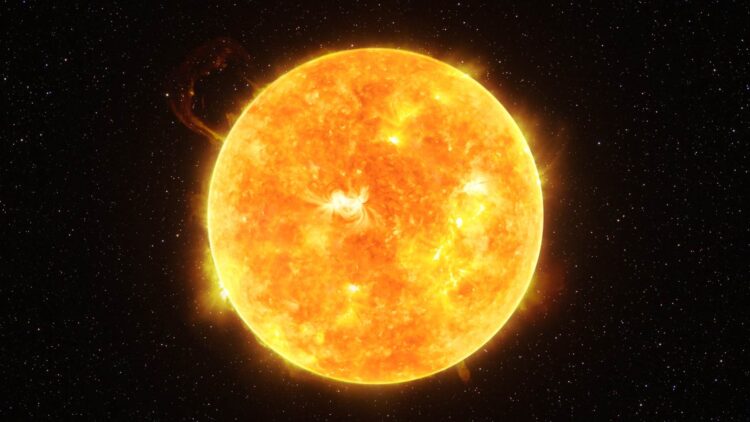NASA’s Parker Solar Probe is once again making history, going around the Sun at record-breaking speeds and moving closer to our star than it has ever been before. This latest flyby, which is its 23rd, has scientists on edge as the spacecraft approaches the Sun’s extreme heat environment.
This probe moves through space at an impressive 430,000 miles per hour (692,000 kilometers per hour), making it the fastest human-made object in history as nothing else we have built before has ever moved at such high speeds.
What makes this flyby particularly nerve-wracking for scientists is the probe’s proximity to the Sun. It is skimming the solar surface at a mere 3.8 million miles (6.1 million kilometers) away, matching its previous closest approach, which, for context, that is about one-tenth of the distance between the Earth and the Sun, meaning Parker is practically brushing against the outer edges of our star’s atmosphere.
Considering the dangers of approaching he sun and the limits in our heat resistance technology, this is a very tense period for the team at mission control. Right now, Parker is completely on its own, operating autonomously while it navigates through intense heat and radiation. Although unmanned, this probe is very important and its survival will yield data beyond what we know about the universe today, and so NASA is eagerly awaiting the moment when it is expected to transmit back data on its status.
NASA expects to lose contact with the probe until that moment, so scientists will be holding their breath waiting to see how their pioneering probe has fared during this latest solar dive and what information it has managed to gather.
Why this mission around the Sun is key
The importance of Parker’s mission cannot be overstated. Nicky Fox, who leads NASA’s Science Mission Directorate in Washington, summed it up best during a previous solar encounter in December: “This is a historic moment in humanity’s first mission to a star. By studying the Sun up close, we can better understand its impacts throughout our solar system, including on the technology we use daily on Earth and in space, as well as learn about the workings of stars across the universe to aid in our search for habitable worlds beyond our home planet.”
The mission has been clear, to approach the Sun in an unprecedented way, and the Parker Solar Probe has been doing it flawlessly since its launch in 2018. It has also performed seven flybys of Venus by using the planet’s gravity as a kind of cosmic slingshot to adjust its trajectory. This has not only provided us with information about this planet, but it has also allowed the probe to tighten its orbit, allowing it to get closer and closer to the Sun’s surface.
These close encounters are allowing scientists to gather unprecedented data about the Sun’s corona, which is the outermost part of its atmosphere. The corona is millions of degrees hotter than the solar surface itself, a long-standing mystery in astrophysics which the Parker aims to help solve.
This data is vital, not just for satisfying our curiosity about the Sun but also for protecting our technology here on Earth. The Sun constantly blasts out charged particles in the form of solar wind, which can wreak havoc on satellites, disrupt GPS signals, and even cause power grid failures and by getting up close and personal with the Sun, Parker is helping scientists understand how these powerful solar storms form and how we might predict or mitigate their effects.
While this latest flyby is a major milestone, Parker’s journey is far from over as the probe is set for another daring close pass on June 19, 2025, and will continue its mission until it eventually succumbs to the Sun’s brutal environment. Until then, it will keep pushing the boundaries of what seems possible, sending back groundbreaking insights about our star and, by extension, stars across the universe.

